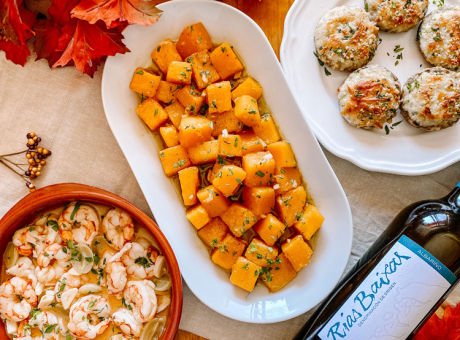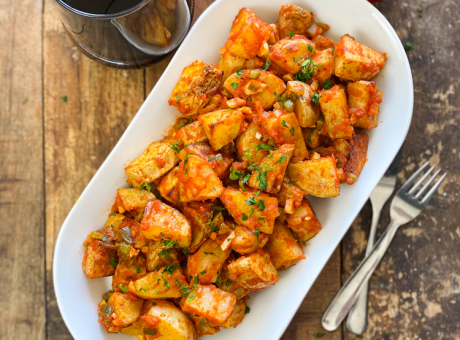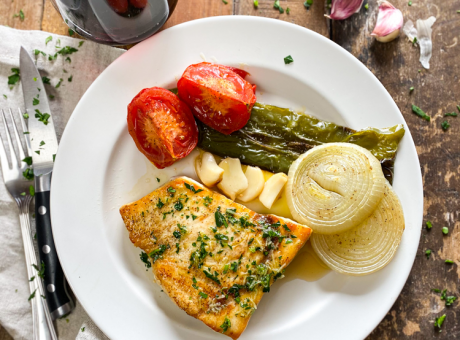
A Quick Guide to Spanish Wines
– Quick Guide to Spanish Wines –
With food comes wine, and Spain has become one of the world´s leaders in the wine industry. Spain is the number 3 country that produces the most wine in the world, behind France and Italy respectively. Spain also has more vines planted to land than any other country. Since Spain is such a versatile country, offering everything from sunny beaches to snow-capped mountains to everything else inbetween, comes an array of many different wines that are being made. In this quick guide to Spanish wines, you will get an insight into Spain´s diverse wines.
Spanish Labeling Laws
Spanish wines are labeled according to how long they have been aged. Here are the most common labels you will find on Spanish wine bottles:
ROBLE: Aged a minimum of 1 month in oak barrels, a young and fruity wine
CRIANZA: Aged for at least 2 years with a minimum of 6 months in oak barrels
RESERVA: Aged for at least 3 years with a minimum of 1 year in oak barrels
GRAN RESERVA: Aged for at least 5 years with a minimum of 18 months in oak barrels
Grape Varieties

Albariño: This thick skinned grape is Spain’s most popular white grape, grown in the region of Galicia, with traces of it being planted near the town of Cambados as far as the 12th century. Some French sources claim that the grape originated in France, but their evidence goes as far as the 15th century. The Albariño grape produces wines that are light, high in acid and usually have alcohol levels between 11% to 13%. It offers aromas of apricots and peaches and leads to a nice balanced finish, perfect for any type of fish, especially shell fish.
Carineña: Originating in the town of Carineña, this red grape is known as a blending grape. Its used everywhere from Rioja to Australia to the south of France. This grape is known for making high acid wines with strong tannins, and is best used when blended with Garnacha and/or Syrah. Carineña is extremely popular as it offers large yields and can transform a simple Garnacha into a softer wine with deeper fruit, greater fragrance, and a superb balance.
Garnacha: One of the most widely planted grapes in the world, it originates in the region of Aragon, and is used everywhere from the Rhone Valley to Australia. It grows well with hot days and cool nights and can be used alone or as a blend. Its known for offering a dark color with high alcohol levels and flavors of red ripe fruit, coffee and leather, and usually having a long finish. In Spain, it is mainly used in the wine regions of Navarra, Rioja, Priorat and Campo de Borja.
Graciano: This red grape is most popular in the region of Rioja and is used as a blending grape. This grape can produce a dark color, strong perfume and age extremely well, and is usually harvested later than most grapes, around late October. It is grown in other parts of the world, such as France and Australia, but really thrives in Spain, as it prefers warmer weather. In Rioja, it´s usually used in Gran Reservas for better structure and to promote longer lasting wines.
Macabeo: Also called Viura, this white grape is used to make white Rioja’s, but is most popular in the DO of Cava, as it´s the main grape used when making the famous Spanish sparkling wine, Cava. In Rioja they also blend this white grape with some red grapes, such as Tempranillo and Garnacha. In Cava it is blended with other white grapes to make sparkling wine. This grape makes mildly acidic wines that are made to be consumed young.
Mencia: This red grape from the Bierzo wine region is leaner than most, with red fruit and a lively snap of acidity. It can be compared to Cabernet Franc, offering a dense perfume and made to be consumed young. Within the last couple of years, many talented Spanish wine makers have started to make wine with old vines of Mencia grapes, and have made them with more concentration and darker in color. This grape can make some amazing wines and should be on your list of wines to buy next time you shop.
Monastrell: One of the most popular grapes in the world, used everywhere from the Rhone Valley to Australia, and called Mourvedre. It should be called Monastrell, as it originates in Spain. This grape has been becoming extremely popular in the regions of Jumilla and Yecla, as they are producing world-class wines for pennies to the dollar. The new wave of talented Spanish wine makers are using old vine Monastrell in these regions to create wines as dark as night, with relatively high alcohol levels and offering plenty of ripe fruit and great concentration.
Palomino: This white grape is the main source to make Sherry, Spain’s famous fortified wine. This grape is mostly found in the region of Andalucía and is usually blended with other native grapes to make sherry. Some sources claim this grape was brought back by Christopher Columbus after he discovered America, but no proof has yet to be made. There are some table wines made with this grape, but they are usually not a success.
Tempranillo: Spain’s most planted grape and its most famous grape. This grape is known for making some of the best wines in Spain, the top (3) regions that make the best Tempranillo are: Rioja, Ribera del Duero and Toro, where it is called “Tinta de Toro”. This grape grows well in high altitudes, with hot days and cool nights. It makes bold red wines that offer plenty of fruit, tobacco, leather and vanilla and is usually made to last many years in the cellar. Tempranillo has been planted in other countries, but it seems dull and boring when grown anywhere outside of Spain.
Verdejo: This white grape is grown in the region of Rueda and was always known for making sweet white wines, when the Rioja gurus of Marques de Riscal came to Rueda, they started making higher quality white wines out of the Verdejo grape and have put Rueda, and Verdejo, on the map of must drink white wines. This grape is usually harvested at night and offers aromatic wines with plenty of fruit, low acid and perfect balance.
Top 10 Wine Regions
Bierzo
- Official Denominación de Origen Year: 1989
- Acres Under Vine: 9,000
- Soil: Granite and Slate
- Vineyard Elevation: 820 to 2900 Feet
- Major Grapes (Red): Mencia, Garnacha
- Major Grapes (White): Doña Blanca, Godello, Palomino
- Estimated Wineries: 53
Campo de Borja
- Official Denominación de Origen Year: 1980
- Acres Under Vine: 15,560
- Soil: Limestone and Clay
- Vineyard Elevation: 1150 to 2300 Feet
- Major Grapes (Red): Garnacha, Tempranillo, Mazuela, Cabernet Sauvignon, Merlot, Syrah
- Major Grapes (White): Macabeo, Moscatel
- Estimated Wineries: 17
Jumilla
- Official Denominación de Origen Year: 1966
- Acres Under Vine: 79,000
- Soil: Limestone
- Vineyard Elevation: 1300 to 2600 Feet
- Major Grapes (Red): Monastrell, Tempranillo, Garnacha, Cabernet Sauvignon, Syrah, Petit Verdot
- Major Grapes (White): Chardonnay, Macabeo, Malvasía, Sauvignon blanc
- Estimated Wineries: 38
Penedès
- Official Denominación de Origen Year: 1991
- Acres Under Vine: 64,000
- Soil: Limestone
- Vineyard Elevation: 825 to 2625 Feet
- Major Grapes (Red): Garnacha, Cariñena, Cabernet Sauvignon, Merlot, Monastrell, Tempranillo, Syrah
- Major Grapes (White): Chardonnay, Macabeo, Parellada, Riesling, Gewürztraminer, Xarel-lo
- Estimated Wineries: 152
Priorat
- Official Denominación de Origen Calificada Year: 2000
- Acres Under Vine: 4,450
- Soil: Black Slate and Quartz
- Vineyard Elevation: 325 to 2290 Feet
- Major Grapes (Red): Garnacha, Cariñena, Cabernet Sauvignon, Merlot, Syrah
- Major Grapes (White): Garnacha Blanca, Macabeo, Pedro Ximénez
- Estimated Wineries: 88
Rias Baixas
- Official Denominación de Origen Year: 1988
- Acres Under Vine: 6,670
- Soil: Slate, Granite, Quartz
- Vineyard Elevation: 330 to 920 Feet
- Major Grapes (Red): Caiño Tinto, Mencía
- Major Grapes (White): Albariño, Albillo Mayor, Godello
- Estimated Wineries: 175
Ribera del Duero
- Official Denominación de Origen Calificada Year: 2008
- Acres Under Vine: 49,400
- Soil: Clay, Limestone, Silt
- Vineyard Elevation: 2400 to 3100 Feet
- Major Grapes (Red): Tempranillo, Garnacha, Cabernet Savignon, Malbec, Merlot
- Major Grapes (White): Albillo
- Estimated Wineries: 245
Rioja
- Official Denominación de Origen Calificada Year: 1991
- Acres Under Vine: 123,000
- Soil: Alluvial, Marl, Clay, Limestone
- Vineyard Elevation: 820 to 1640 Feet
- Major Grapes (Red): Tempranillo, Garnacha, Graciano, Mazuelo
- Major Grapes (White): Viura, Malvasía and Garnacha Blanca
- Estimated Wineries: 150
Rueda
- Official Denominación de Origen Year: 1980
- Acres Under Vine: 19,000
- Soil: Gravel, Limestone
- Vineyard Elevation: 1960 to 2550 Feet
- Major Grapes (Red): Tempranillo, Garnacha
- Major Grapes (White): Verdejo, Viura, Sauvignon Blanc
- Estimated Wineries: 40
Toro
- Official Denominación de Origen Year: 1987
- Acres Under Vine: 19,700
- Soil: Limestone, Clay
- Vineyard Elevation: 2000 to 2450 Feet
- Major Grapes (Red): Tinta de Toro (tempranillo), Garnacha
- Major Grapes (White): Verdejo, Malvasía
- Estimated Wineries: 45
I hope you enjoyed this Quick Guide to Spanish Wines and it can guide you in the right direction next time you buy a bottle of Spanish wine. Salud!
Discover more from Spain on a Fork
Subscribe to get the latest posts sent to your email.





Kathie Dingeman
I drank a lot of wonderful wine while I walked the Camino Frances. La Rioja was so beautiful to walk through. So many grapes, olives, rosemary… I look forward to returning to Spain some day soon. 🍷
10 . May . 2023Spain on a Fork
Sounds great! Much love 🙂
10 . May . 2023